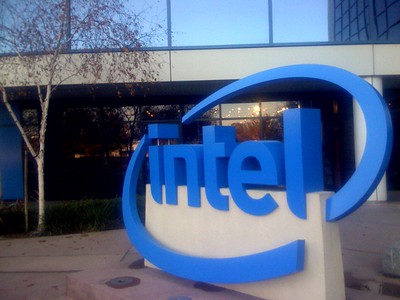|
|
|
Tuesday, March 17th, 2020

A couple of years ago I wrote
A corporation isn’t an entity at all. It’s a group of people, with shared values, all moving in the same direction, united in a shared vision and their efforts to reach a common goal.
Lou Gerstner, who remade the culture at IBM, most famously said,
I came to see, in my time at IBM, that culture isn’t just one aspect of the game, it is the game.
The culture continued to change when Sam Palmisano took over.
…the biggest breakthroughs are a result of changing the business model and the processes and the culture.
Microsoft’s Steve Ballmer learned the hard way that culture can’t be changed by edict, whereas Satya Nadella’s approach succeeded.
Over the last year, 110,000 strong Intel has been changing under the leadership of Robert Swan, who considers the cultural change necessary for its survival.
Its culture badly needed an overhaul, and its 110,000 employees needed to confront issues more openly.
“If you have a problem, put it on the table,” said Mr. Swan, 59, who was promoted to the top job a year ago and has since embarked on a campaign to shake up the Silicon Valley giant.
His efforts remain a work in progress. But the changes — some of which lean on the precepts of Andrew S. Grove, the former Intel chief executive who coined the credo “Only the paranoid survive” — are Intel’s biggest attitude adjustment in decades.
The underlying cause is the same as Gerstner and Nadella faced at their companies: complacency.
Complacency, from years of dominating their markets, and silos, from internal distrust and myopic communications.
Intel was the same.
Intel also had deeply rooted problems reflecting its years of dominance, Mr. Swan said. Managers, complacent about competition, battled internally over budgets. Some of them hoarded information, he said.
These are the same problems that companies of all sizes face.
No matter how dominant times change and competitors can seize the day.
While success is often seen as a case of “us” vs. “them” it’s crucial to remember that “us” includes customers, partners and all parts of the company.
Image credit: Aaron Fulkerson
Posted in Culture | No Comments »
Monday, October 14th, 2019

Poking through 13+ years of posts I find information that’s as useful now as when it was written.
Golden Oldies is a collection of the most relevant and timeless posts during that time.
CEOs screwing up their company culture isn’t new. And, one way or another, CEO ego is usually the cause; what differs is what they do now vs. then. Before, it was rotten decisions based on dinosaurian mindsets coupled with a god complex. Now the screw-ups tend to be grounded in rotten decisions based on hard-to-believe immaturity coupled with a god complex.
Read other Golden Oldies here.
Edicts by Steve Ballmer and tweets by David Sacks do not a culture change.
Changing culture doesn’t happen overnight and takes a lot of damn hard work.
But it can be done.
And for CEOs willing to take the time and do the work, the payoff is ginormous to the 10th power and goes well beyond money — for the company, the employees, stakeholders and last, but certainly not least, for themselves.
Just ask Satya Nadella or Lou Gerstner, who turned around IBM and said it best.
“I came to see, in my time at IBM, that culture isn’t just one aspect of the game—it is the game.”
On a funny, or should I say ironic, side note.
As I looked through past posts and articles I realized how similar in name Nadella is to his complete cultural and managerial opposite, [Robert] Nardelli.
Separated by two letters and a mental chasm that dwarfs the Grand Canyon.
Flickr image credit: jphilipg
Posted in Culture, Golden Oldies | No Comments »
Tuesday, November 13th, 2018

Typically, I don’t use this space to vent my personal rage, but I am today and the focus is Skype.
I’m also ranting late in the game, since the cause of my rant happened summer of 2017.
I kept hoping they’d fix it, which just goes to show what happens when optimism overrules common sense and experience.
It used to be great, but the ground up redesign…stinks is the most polite term I can think of.
Of course, it’s not just me, look at the 295 reviews at Consumer Affairs or The Verge article (or dozens of others), but all I read talked about their using it on their phones.
I use Skype chat on my laptop daily to work with colleagues in Russia. It’s business, not social.
I wondered why (I always wonder ‘why’.) Microsoft so totally screwed it up.
I found the answer in the Digital Journal.
As set out by The Next Web, the bulk of the criticism lies in the decision to reinvent Skype as a social-first app. Skype’s old focus on chats, calls and professional communication has been dropped in favour of building an all-out Snapchat clone for younger users.
No wonder I didn’t understand. I’ve never used Snapchat and certainly don’t qualify as a “younger user.”
Sadly, none of the updates since then have fixed anything.
You would think Microsoft would have at least some respect for their business users.
The reasoning and the action is what I would have expected from Steve Ballmer, but not from Satya Nadella.
If nothing else, you’d think they might, at least, have heard the adage “if it ain’t broke don’t fix it.”
Image credit: Logoworks
Posted in Communication | No Comments »
Tuesday, September 26th, 2017

Last February I wondered if the iconic 1984 Apple Super bowl ad would still feature a woman if it were made today.
There’s been a lot of change since that ad, but for women and people of color much of the pre-2000 progress has regressed.
Fixing that means transforming what-is to what-should-be and management professor and guru Henry Mintzberg offers some of the wisest thoughts I’ve seen on the subject (‘wise’ being very different than ‘smart’).
Transformation requires change — the organization and its culture must transform itself based on a new vision and different core values.
But where to begin? That’s easy: at the “top”. Where else when there’s such pressure. Besides, any chief who has been to a business school or reads the business press knows that it’s all about leadership: the boss who does the thinking that drives everyone else. Louis XIV said “L’état, c’est moi!” Today’s corporate CEO says “The enterprise, that’s me!”
I’m sure we can all think of numerous CEOs who model Louis’ mindset and dozens of them have gone down in the conflagrations they started at the top.
Yesterday’s Golden Oldie revisited Steve Ballmer’s effort to transform Microsoft’s culture by edict. It didn’t work.
Ballmer seemed to channel John Kotter’s eight point approach:
- Establish a sense of urgency.
- Form a powerful guiding coalition.
- Create a vision.
- Communicate the vision.
- Empower others to act on the vision.
- Plan for and create short-term wins.
- Consolidate improvements and produce still more change.
- Institutionalize new approaches.
As Mintzberg points out, this is a top-down, command/control approach that certainly won’t fly well with today’s workforce in spite of being taught at Harvard Business School by a “transformation guru.”
Mintzberg demolishes each point (read his post) and is backed by solid brain science.
…to achieve this result, people throughout the company need to change their behavior and practices, and that can’t happen by simple decree. (…) New behaviors can be put in place, but only by reframing attitudes that are so entrenched that they are almost literally embedded in the physical pathways of employees’ neurons. These beliefs have been reinforced over the years through everyday routines and hundreds of workplace conversations. They all have the same underlying theme: “That’s the way we do things around here.”
The most dynamic, ongoing case study of transformation is being played out publicly at Uber.
It will be interesting to see which approach Uber’s new CEO Dara Khosrowshahi uses.
Image credit: Howard Hecht
Posted in Change, Culture, Ducks In A Row, Personal Growth | No Comments »
Monday, September 25th, 2017
It’s amazing to me, but looking back over more than a decade of writing I find posts that still impress, with information that is as useful now as when it was written.
Golden Oldies are a collection of what I consider some of the best posts during that time.
Everybody pretty much agrees that the culture of tech companies need to change. (The focus used to be on Wall Street. It never changed, but the focus did and tech is the new, very visible poster boy of bad culture.) It’s also agreed that changing a company’s culture isn’t simple — and it certainly isn’t done by proclamation.
Read other Golden Oldies here.
 I’ve written many times about the importance of breaking down both horizontal and vertical silos (for more click the silo tag), but I don’t believe it can be done with an edict—even if that edict comes from Steve Ballmer. I’ve written many times about the importance of breaking down both horizontal and vertical silos (for more click the silo tag), but I don’t believe it can be done with an edict—even if that edict comes from Steve Ballmer.
This is especially true at a company like Microsoft, where the silos were intentionally built decades ago as part of the corporate structure.
Vertical silos, by nature, create, at the least, rivalry, but, more often, an “us against them” mentality within each silo.
For thousands of Microsofties, that’s the only cultural world they have known; many of them grew up in it, both in terms of years and promotions.
Changing culture is recognized as the most difficult organizational change any company, no matter the size, can undertake.
And one of the greatest error’s a CEO makes is thinking that all he needs on board is his senior staff the rest of people will fall in line.
For most companies, let alone one the size of Microsoft, terminating managers and workers that don’t fall in line isn’t even an option, since there is no way to replace them.
Yet having large numbers of your workforce on different cultural pages is a recipe for disaster.
The results of Ballmer’s changes will unfold over the next couple of years—in spite of Wall Street’s quarterly focus.
Changing culture is tremendously difficult; Charlie Brown didn’t pull it off at AT&T; Lou Gerstner said it was the most difficult part of turning around IBM.
Do you think Ballmer will succeed?
Image credit: Tobyotter
Editorial note: The answer was ‘no’ and Ballmer left Microsoft 6 months later.
Posted in Change, Culture, Golden Oldies | No Comments »
Friday, December 16th, 2016
A Friday series exploring Startups and the people who make them go. Read all If the Shoe Fits posts here
 Pronouncements by pundits are often pretty funny, but those that come from corporate heads (who should know better) are worse. Pronouncements by pundits are often pretty funny, but those that come from corporate heads (who should know better) are worse.
That is especially true when they are obviously suffering from head-in-the-sand syndrome.
Lest you think it’s a modern phenomenon here is one from 1876.
William Orton, President of Western Union, when deciding not to buy the patent for the telephone. “What use could this company make of an electrical toy?”
Steve Jobs said e-readers would fail, because people no longer read.
Steve Ballmer, whose foot spent a lot of time in his mouth, called Google a “house of cards.”
Just last year JPMorgan CEO Jamie Dimon sounded off about blockchain ledger products, such as Bitcoin
“This is my personal opinion, there will be no real, non-controlled currency in the world. There is no government that’s going to put up with it for long … there will be no currency that gets around government controls.”
Of course, tech execs aren’t the only ones to nosh on their toes.
There are a lot more, read them all on CB Insights blog.
Why?
Because they might help you keep your foot out of your mouth as your company grows.
Image credit: HikingArtist
Posted in Communication, If the Shoe Fits | No Comments »
Tuesday, June 7th, 2016

Edicts by Steve Ballmer and tweets by David Sacks do not a culture change.
Changing culture doesn’t happen overnight and takes a lot of damn hard work.
But it can be done.
And for CEOs willing to take the time and do the work, the payoff is ginormous to the 10th power and goes well beyond money — for the company, the employees, stakeholders and last, but certainly not least, for themselves.
Just ask Satya Nadella or Lou Gerstner, who turned around IBM and said it best.
“I came to see, in my time at IBM, that culture isn’t just one aspect of the game—it is the game.”
On a funny, or should I say ironic, side note.
As I looked through past posts and articles I realized how similar in name Nadella is to his complete cultural and managerial opposite, [Robert] Nardelli.
Separated by two letters and a mental chasm that dwarfs the Grand Canyon.
Flickr image credit: jphilipg
Posted in Change, Culture, Ducks In A Row | No Comments »
Wednesday, February 25th, 2015

Staying relevant is crucial for every functional group in today’s business landscape.
Relevance has nothing to do with being outsourced and everything to do with being necessary to the operations of the enterprise.
Customer service is often outsourced, but no one questions whether it’s relevant to the company’s success.
IT has been outsourced, but now its very relevance is under attack.
This fight is different.
It’s called devops (a contraction of development and operations)
It’s the hardest kind of fight to win, because winning means a major change to both IT process and its cultural DNA; a totally different way of thinking that is based on what has always been anathema to traditional IT — breaking the system.
Red Hat CEO Jim Whitehurst explains.
“It’s not a market. It’s a culture and process, in the same way Kaizen or lean manufacturing is process. The problem is that vendors are making it into a market by saying ‘Here’s my devops product.’ But there are no devops products,” Whitehurst says. (…) “If you make a lot of changes, you’ll have to accept a few failures along the way. Throw out planning. Try little things and if they work, do more of them and if not, do less of them.”
So, no devops products, no new markets for vendors to exploit and no definitely no outside experts to do the heavy lifting — although there will be plenty claiming to de devops gurus.
But if there is anything to be learned from companies like Microsoft it’s that cultural change doesn’t come from the outside nor is it changed by edict.
“You start with small, iterative improvements. You release [changes] early and you release them often. That’s what devops is about. It’s a cultural shift. You recognize that big change is hard but little changes are easy. But a whole lot of little changes add up to bigger changes.”
Change is hard, but in this case, change equals survival.
Image credit: N@ncy N@nce
Posted in Culture | No Comments »
Monday, October 13th, 2014

I was never impressed with Steve Ballmer when he headed Microsoft.
I didn’t follow him closely, but based on what I read/heard he seemed opaque, bombastic, prone to management by edict and incredibly arrogant.
I could have missed it, but I never heard Ballmer admit a mistake, even with a debacle like Windows 8.
Admitting errors or missteps, being vulnerable and being open to saying “I don’t know” are all signs of a secure executive.
So far, that description seems to fit Satya Nadella, Microsoft’s new CEO.
There are three things that we are thinking hard about when we think about Windows moving forward. We have to nail the user experience. It doesn’t mean one user experience for all form factors but consistency that makes sense when using any one of those devices. Let’s face it, we got some things wrong in Windows 8, and I feel very good about the progress we’re making, especially for Windows 7 upgrade into Windows 10.
The next area we’re thinking about is the IT component. Getting identity packaging, device management and data security right.
Lastly, the developer. We will have the Universal Windows Application platform.
That’s a far cry from the old Microsoft that built what they wanted, arrogantly assumed that everyone would love it—and wouldn’t back down when they didn’t.
Of course, no matter how smart or mindful people still end up with their foot in their mouth as Nadella did at the Grace Hopper Celebration of Women in Computing.
Mr. Nadella, the chief executive of Microsoft, suggested on Thursday that women who do not ask for more money from their employers would be rewarded in the long run when their good work was recognized.
Oops, not something that would ever be said to a man; actually, not the smartest comment anytime, let alone now, with the spotlight on the way women are treated in tech.
Twitter, of course, lit up.
But Nadella didn’t waste time before he said he was wrong and he didn’t dance or minimize.
“Was inarticulate re how women should ask for raise,” he wrote in a Twitter post. “Our industry must close gender pay gap so a raise is not needed because of a bias.”
Mr. Nadella went further in an email to Microsoft employees on Thursday night, saying “I answered that question completely wrong.”
He added: “If you think you deserve a raise, you should just ask.”
Secure bosses know when to back down.
And when to say, “I was wrong.”
They know when showing vulnerability is better than pretending invincibility.
They are willing to say ‘I don’t know’ and listen to whomever has the information.
They don’t always need to be right.
Flickr image credit: BK
Posted in Communication, Personal Growth | 1 Comment »
Tuesday, February 25th, 2014

Microsoft has done a lot of dumb things over the years and they haven’t stopped yet.
A recent ad campaign for Windows Azure implied it was “so easy, even an older woman can do it.”
This on top of an earlier tweet from @WindowsAzure.
“What do you do when your 68-year-old secretary needs Active Directory Multi-Factor Authentication? Ask Dear Azure.”
Social media wasn’t happy and Microsoft ended up apologizing for its “poor judgment.”***
However, Microsoft’s apology doesn’t cut much ice when viewed in light of the dynamics that drove/are driving the development of Windows 8.
According to a person who claims to be on the Windows 8 design team this is the thinking behind Metro.
It’s designed for your computer illiterate little sister, for grandpas who don’t know how to use that computer dofangle thingy, and for mom who just wants to look up apple pie recipes.
I have a low opinion of Win8 based on hearsay and the bad reviews I’ve read, but that’s beside the point.
Assuming what the programmer shared is even relatively accurate it shows that the ad was more business as usual than an error in judgment.
It reflects a corporate MAP (mindset, attitude, philosophy™) grounded in the C suite and begs the question of whether it will continue in a world sans Ballmer and Gates.
***In fairness, Geek Feminism says this gaff is common.
No phrase expresses the meme of female technical ineptitude more neatly than “So simple, even your [grand]mother could do it.” This is a very commonly encountered form of condescension.
Flickr image credit: Metassus
Posted in Culture, Ducks In A Row | No Comments »
|
 Subscribe to
Subscribe to
MAPping Company Success
About Miki 
Clarify your exec summary, website, etc.
Have a quick question or just want to chat? Feel free to write or call me at 360.335.8054
The 12 Ingredients of a Fillable Req
CheatSheet for InterviewERS
CheatSheet for InterviewEEs™
Give your mind a rest. Here are 4 quick ways to get rid of kinks, break a logjam or juice your creativity!
Creative mousing
Bubblewrap!
Animal innovation
Brain teaser
The latest disaster is here at home; donate to the East Coast recovery efforts now!
Text REDCROSS to 90999 to make a $10 donation or call 00.733.2767. $10 really really does make a difference and you'll never miss it.
And always donate what you can whenever you can
The following accept cash and in-kind donations: Doctors Without Borders, UNICEF, Red Cross, World Food Program, Save the Children
*/
?>About Miki
About KG
Clarify your exec summary, website, marketing collateral, etc.
Have a question or just want to chat @ no cost? Feel free to write
Download useful assistance now.
Entrepreneurs face difficulties that are hard for most people to imagine, let alone understand. You can find anonymous help and connections that do understand at 7 cups of tea.
Crises never end.
$10 really does make a difference and you’ll never miss it,
while $10 a month has exponential power.
Always donate what you can whenever you can.
The following accept cash and in-kind donations:
|








 I’ve written many times about the importance of
I’ve written many times about the importance of  Pronouncements by pundits are often pretty funny, but those that come from corporate heads (who should know better) are worse.
Pronouncements by pundits are often pretty funny, but those that come from corporate heads (who should know better) are worse.




